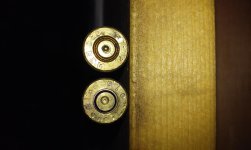Hi all,
I’m currently reloading 38 and 45 on my Lee Classic turret. I’d like to slowly move to rifle, namely .223 and 6.5 Creedmoor. I think the .223 is probably easier, so I guess I’ll start with that.
From what I’ve read, it’s probably ok to load the .223 on the Classic Turret without too much issue, esp since I'm not shooting for 100% accuracy yet. It’s the 6.5 Creedmoor (RPR) where I may want to consider a nice single stage press for better precision? As I understand, it seems the main difference between pistol and rifle is the lubing of the cases and the case prep. The Dillon lube looks nice and I’ve also watched some reviews on the Frankford Arsenal Plat case prep station – I think that 1 device can take care of all of the case prep that’s necessary? Is the FA Platinum case prep station just cleaning the pocket primer and do you still need a separate ream/swage device?
Right now, I have semi-auto .223s and a bolt action 6.5 Creedmoor (the latter being focused on accuracy). I put the following steps together from what I think the steps to reload rifle are – do I have the steps listed correctly?
1. Deprime fired brass and tumble with SS media
2. Lube case and run thru full-length resizer and collet neck sizing die
3. Case prep (trim, re-size, clean pocket, deburr, swage) – does the order matter?
4. Tumble again with soap to clean lube off brass
5. Prime, charge, seat bullet, and crimp
Currently, I’m using the Lee Auto Drum charging system on the turret press for the pistol loads. I think for rifle, most would have another bench mounted powder drop and would use a funnel to charge the cases?
Any other brass prep steps I haven’t mentioned or anything else unique to reloading .223? I know some here some like the Lee stuff but the 4-die 223 set seems reasonably price and gets very good reviews. What more do you get going with one the performance die sets with the micrometer? Is that wasted money for AR range brass?
I’m currently reloading 38 and 45 on my Lee Classic turret. I’d like to slowly move to rifle, namely .223 and 6.5 Creedmoor. I think the .223 is probably easier, so I guess I’ll start with that.
From what I’ve read, it’s probably ok to load the .223 on the Classic Turret without too much issue, esp since I'm not shooting for 100% accuracy yet. It’s the 6.5 Creedmoor (RPR) where I may want to consider a nice single stage press for better precision? As I understand, it seems the main difference between pistol and rifle is the lubing of the cases and the case prep. The Dillon lube looks nice and I’ve also watched some reviews on the Frankford Arsenal Plat case prep station – I think that 1 device can take care of all of the case prep that’s necessary? Is the FA Platinum case prep station just cleaning the pocket primer and do you still need a separate ream/swage device?
Right now, I have semi-auto .223s and a bolt action 6.5 Creedmoor (the latter being focused on accuracy). I put the following steps together from what I think the steps to reload rifle are – do I have the steps listed correctly?
1. Deprime fired brass and tumble with SS media
2. Lube case and run thru full-length resizer and collet neck sizing die
3. Case prep (trim, re-size, clean pocket, deburr, swage) – does the order matter?
4. Tumble again with soap to clean lube off brass
5. Prime, charge, seat bullet, and crimp
Currently, I’m using the Lee Auto Drum charging system on the turret press for the pistol loads. I think for rifle, most would have another bench mounted powder drop and would use a funnel to charge the cases?
Any other brass prep steps I haven’t mentioned or anything else unique to reloading .223? I know some here some like the Lee stuff but the 4-die 223 set seems reasonably price and gets very good reviews. What more do you get going with one the performance die sets with the micrometer? Is that wasted money for AR range brass?

